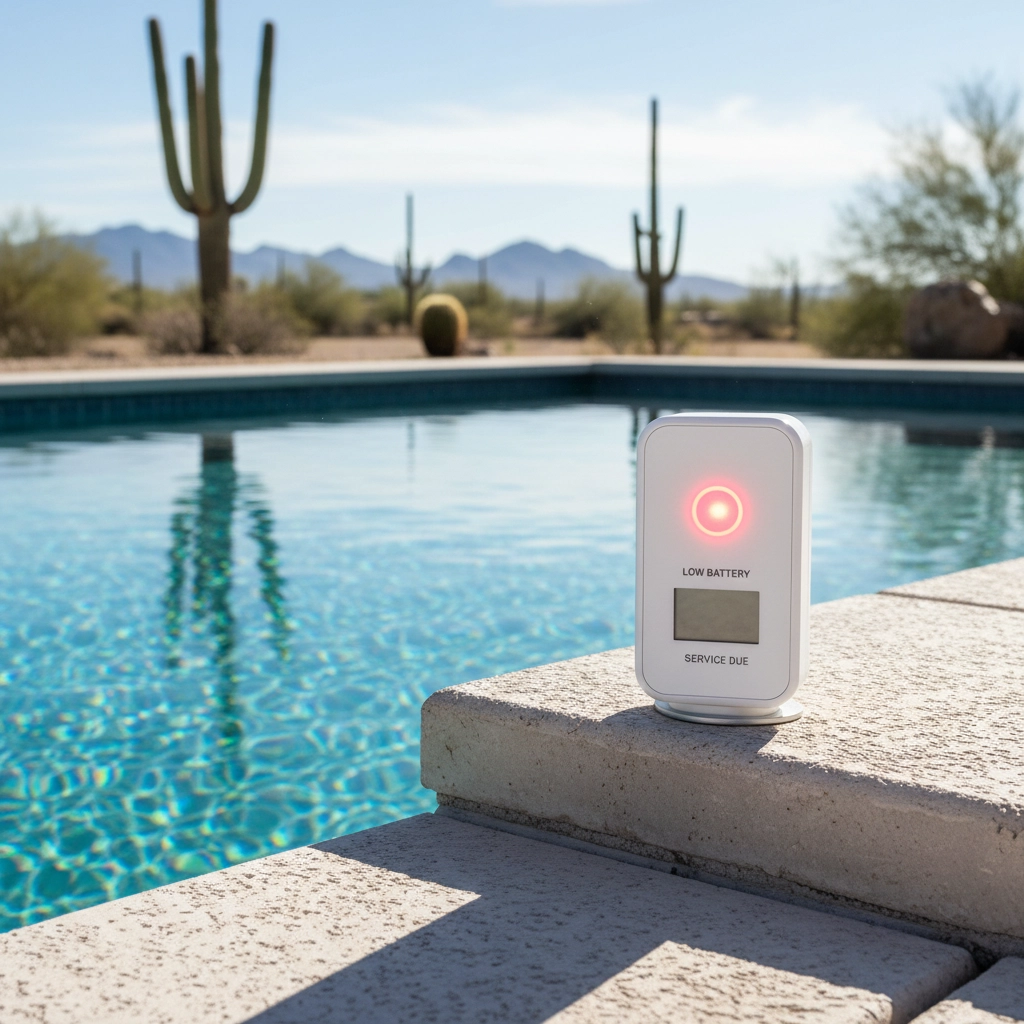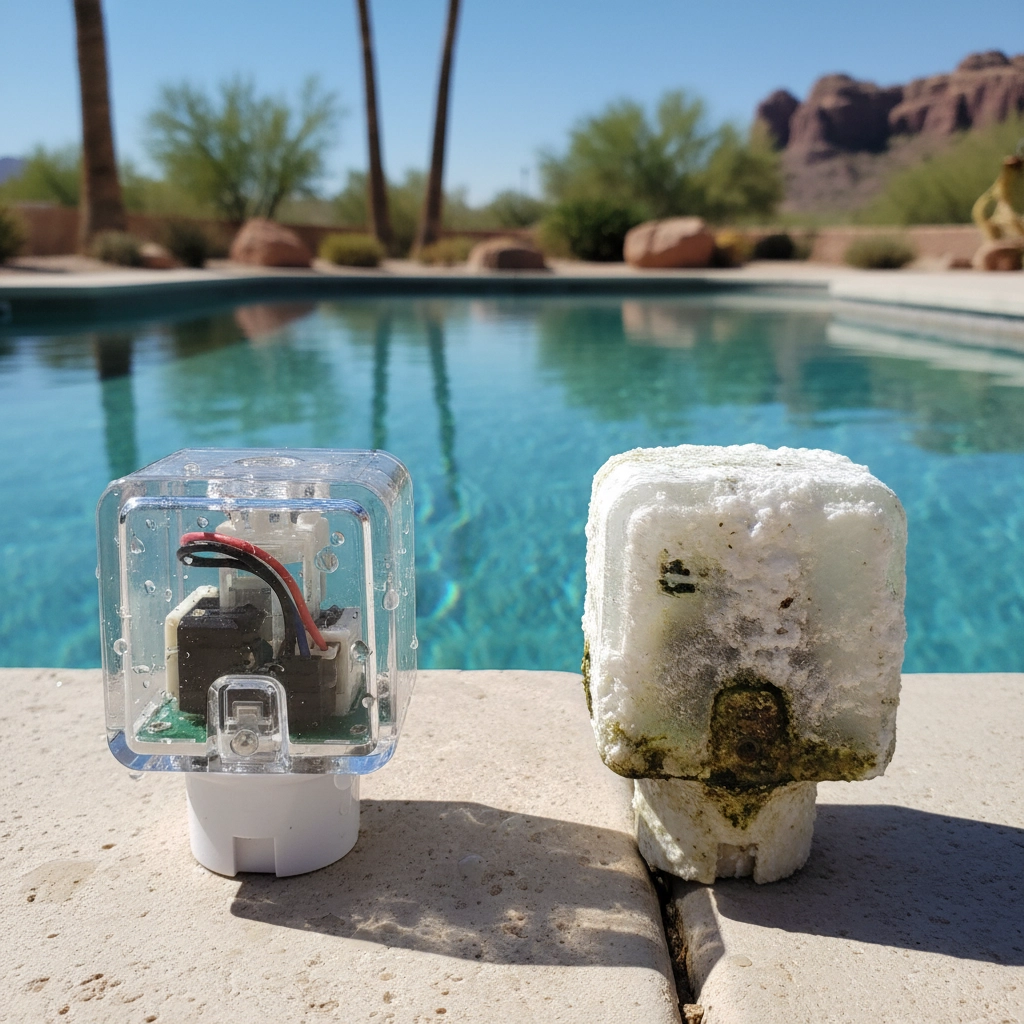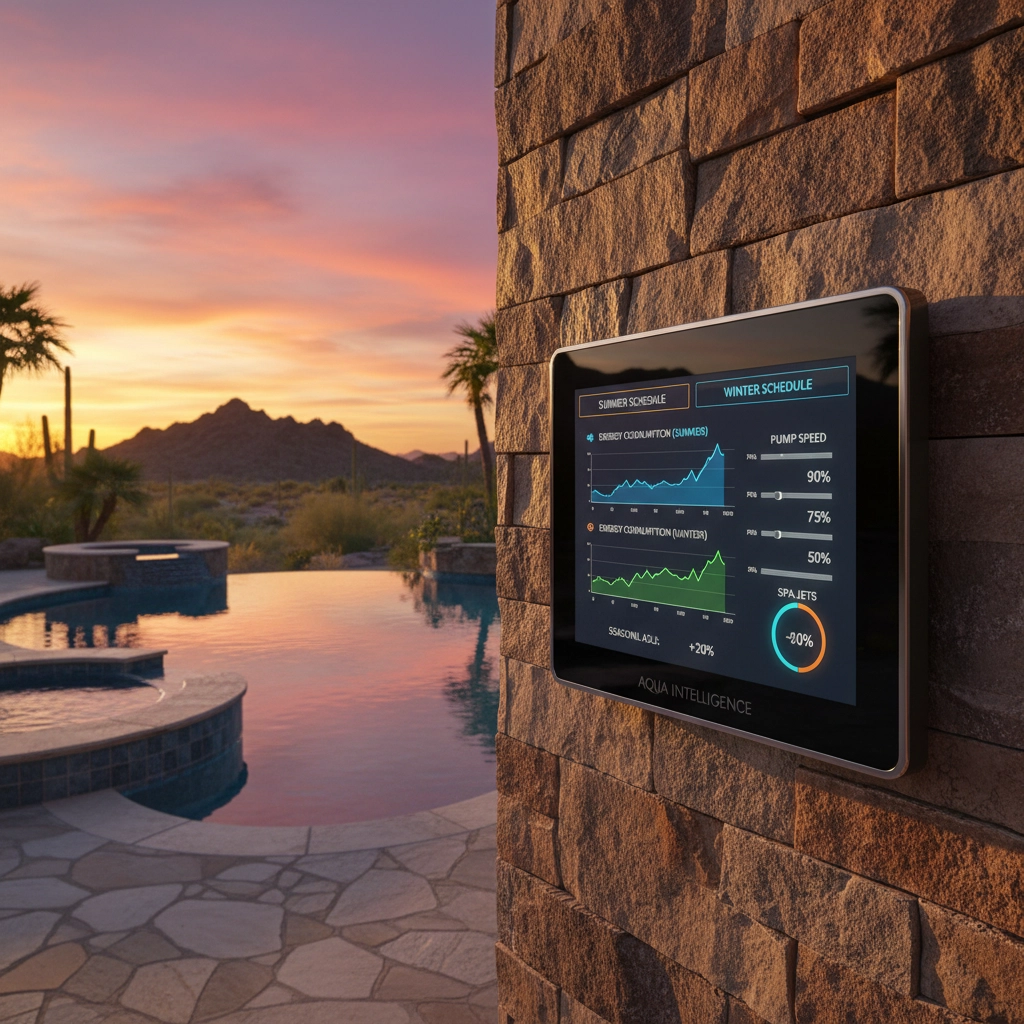Smart pool technology has transformed how homeowners in Queen Creek, San Tan Valley, Mesa, Gilbert, and Chandler manage their pools. From automated chemical dispensers to smartphone-controlled pumps, these systems promise effortless pool maintenance. But here's the thing – even the smartest technology can't overcome user error.
If you're like most Arizona pool owners, you've probably invested in some form of smart pool equipment, thinking it would make pool care a breeze. Yet you might still be dealing with cloudy water, unexpected chemical imbalances, or equipment that doesn't seem to work as advertised. The problem isn't necessarily your equipment – it's likely one of these seven common mistakes.
Mistake #1: Treating Your Smart Pool Alarm Like a Smoke Detector
Your pool alarm is sophisticated safety equipment, not just another household gadget you can ignore for years. Many homeowners install these devices and forget about them completely, which defeats their life-saving purpose.
The most dangerous oversight? Battery neglect. Dead batteries mean a dead alarm system, and you won't know until it's too late. Even worse, many smart alarms lose their calibration over time, becoming either too sensitive (triggering false alarms from wind or debris) or not sensitive enough to detect actual emergencies.
The Fix: Set a monthly reminder to test your alarm system. Replace batteries annually, whether they seem dead or not – it's cheap insurance. Test the alarm by creating controlled disturbances in the water and adjusting sensitivity settings until you get reliable performance without false triggers.

Mistake #2: DIY Installation Without Reading the Manual
Smart pool equipment comes with specific installation requirements that many Arizona homeowners skip in their eagerness to get systems running. This is especially problematic with our intense desert conditions, where improper placement can lead to equipment failure or poor performance.
Surface wave alarms installed in corners, pH sensors placed in dead circulation zones, and smart pumps installed without proper electrical protection are common issues we see throughout the East Valley. These placement errors can render expensive equipment useless or even dangerous.
The Fix: Before installing any smart pool device, study the manual's placement requirements. If you're unsure about electrical work or optimal sensor placement, consult with a professional. A few hundred dollars spent on proper installation can save thousands in equipment replacement and potential safety issues.
Mistake #3: Forgetting Your Sensors Need TLC Too
Your smart pool monitoring system is only as good as its sensors, but most homeowners treat these precision instruments like they're maintenance-free. In Arizona's harsh environment, with intense UV exposure, dust storms, and extreme temperature swings, sensors require regular attention.
Dirty sensors provide inaccurate readings, leading to poor chemical balance decisions. Scale buildup from our hard water can completely block sensor functions, while UV degradation can cause premature failure.
The Fix: Clean sensors monthly with appropriate solutions (usually diluted muriatic acid for scale, gentle brushing for algae). Calibrate sensors every three months using calibration solutions from your pool supply store. Keep spare sensors on hand – they're consumable items, not permanent fixtures.

Mistake #4: Confusing ORP Readings with Chlorine Levels
This technical mistake trips up even experienced pool owners. Many smart monitoring systems measure oxidation reduction potential (ORP) in millivolts, not chlorine levels in parts per million (ppm). These are related but different measurements, and confusing them leads to chemical imbalances.
ORP measures your water's sanitizing potential – how effectively it's killing contaminants. A proper ORP reading should be above 650mV. However, this doesn't directly tell you your chlorine level, which should be maintained between 1.0-3.0 ppm for residential pools.
The Fix: Understand what your system actually measures. If you need direct chlorine readings, invest in an amperometric chlorine sensor. For ORP systems, learn to correlate ORP readings with traditional chlorine tests until you understand your pool's patterns.
Mistake #5: Set-It-and-Forget-It Programming
Smart pumps and automated systems offer incredible efficiency and convenience, but only when properly programmed for your specific situation. Many homeowners use default settings that don't account for their pool size, usage patterns, or Arizona's unique seasonal demands.
Running pumps too little during our intense summer months leads to stagnation and algae growth. Conversely, over-running equipment during cooler months wastes energy and causes premature wear. Our desert climate requires different approaches than the manufacturer's generic programming.
The Fix: Adjust your programming seasonally. Summer requires longer filtration cycles and more frequent chemical dosing. Winter allows for reduced operation. Learn your pool's specific needs through monitoring and adjust accordingly. Variable-speed pumps should run longer at lower speeds rather than shorter periods at high speed.

Mistake #6: Ignoring Smart System Integration
Modern pool systems work best when components communicate and coordinate with each other. However, many homeowners add smart devices piecemeal without ensuring proper integration, creating a hodgepodge of incompatible systems that don't share information.
For example, having a smart chemical controller that doesn't communicate with your smart pump means chemical distribution problems. Or installing smart lighting that doesn't coordinate with your automation system, missing energy-saving opportunities.
The Fix: When upgrading to smart technology, prioritize systems that work together. Choose equipment from manufacturers that offer integrated solutions, or ensure different brands can communicate through common protocols. If you already have mismatched equipment, consider upgrading to a central automation system that can coordinate different devices.
Mistake #7: Seasonal Equipment Abandonment
Arizona's mild winters lead many pool owners to completely ignore their smart equipment during cooler months. While our pools don't freeze, neglecting equipment during the off-season leads to problems when swimming season returns.
Sensors left in stagnant water develop scaling and biofouling. Pumps that sit idle for months may have seal problems when restarted. Automated chemical systems can develop clogs or calibration drift during extended downtime.
The Fix: Develop a winter maintenance routine for smart equipment. Remove and store sensitive sensors according to manufacturer instructions. Run pumps periodically to prevent seal problems. Perform thorough cleaning and calibration before returning equipment to service in spring.
Making Smart Technology Actually Smart
Smart pool technology offers incredible benefits for Arizona pool owners – energy savings, consistent water quality, and peace of mind. However, these systems require informed users who understand their capabilities and limitations.
The key is treating your smart pool equipment like the sophisticated systems they are, not magical solutions that require no attention. Regular maintenance, proper installation, and understanding your specific equipment will ensure you get the performance and longevity you paid for.
Remember, even the smartest technology can't replace basic pool knowledge. Understanding water chemistry, circulation principles, and equipment functions will help you troubleshoot problems and optimize performance. When in doubt, don't hesitate to consult with professionals who understand both the technology and the unique challenges of pool ownership in the Arizona desert.
Your smart pool investment should make pool ownership easier, not more complicated. By avoiding these common mistakes, you'll enjoy crystal-clear water with minimal effort while protecting your investment for years to come.


0 Comments